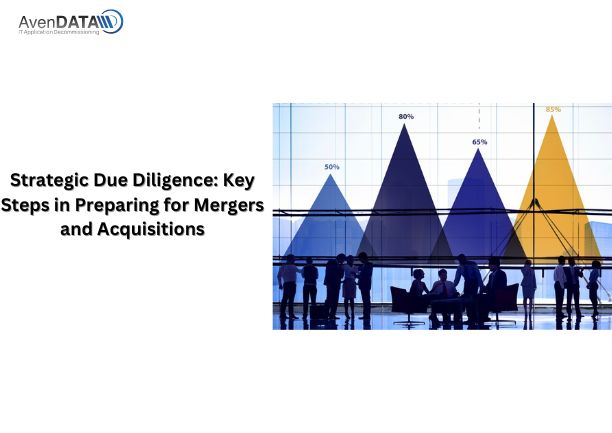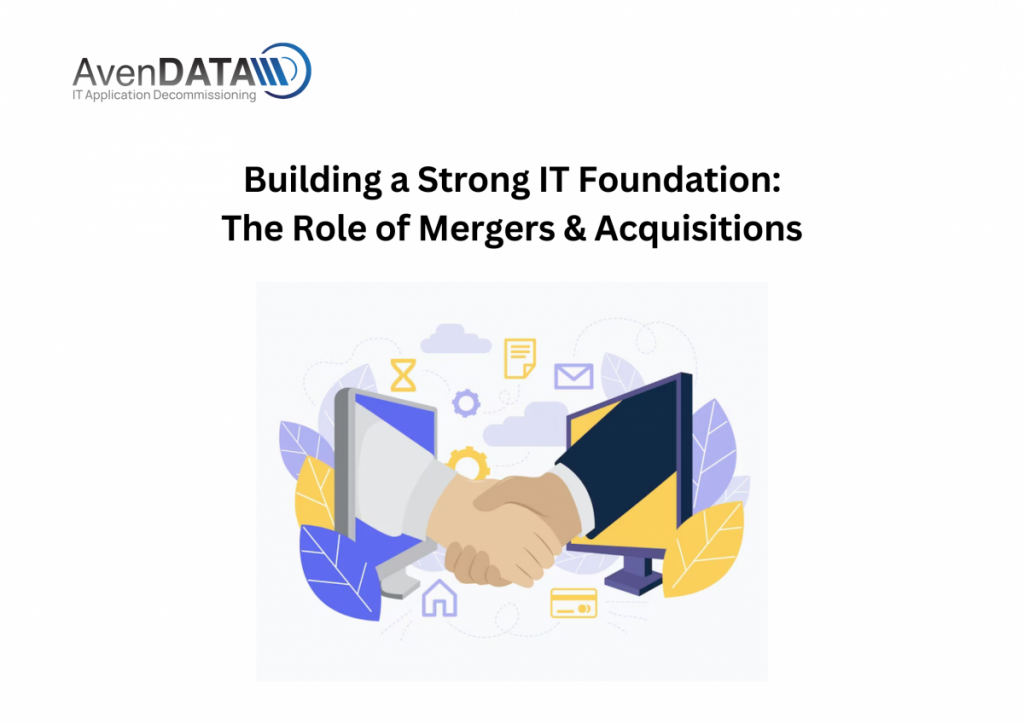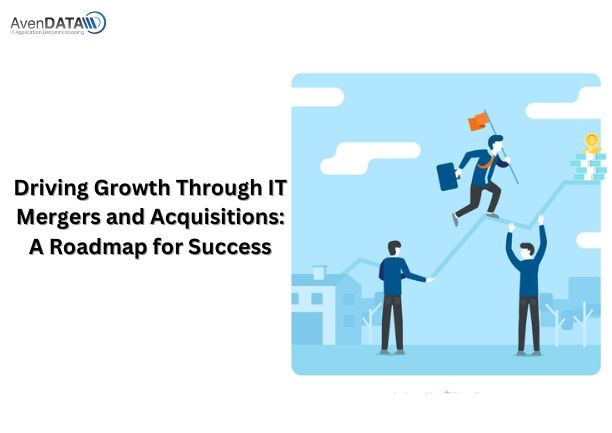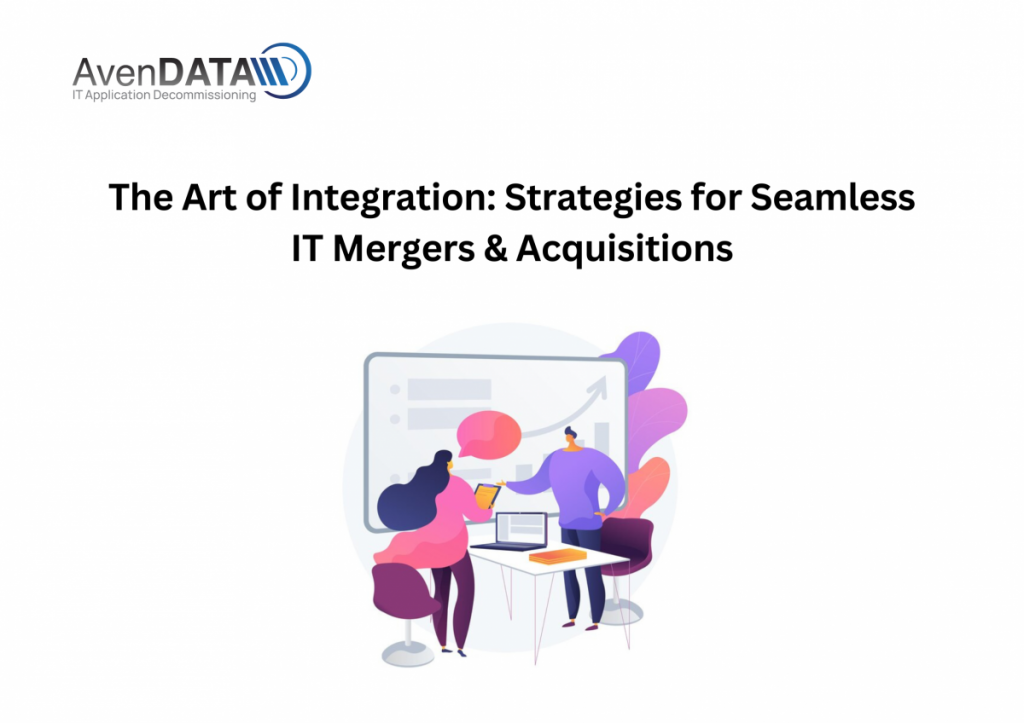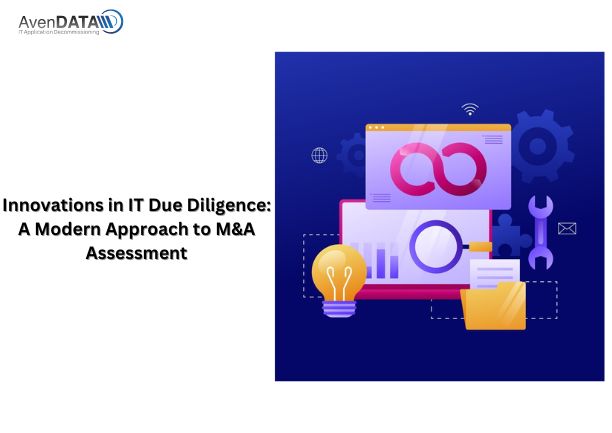Strategic Due Diligence: Key Steps in Preparing for Mergers and Acquisitions
Mergers and acquisitions (M&A) are transformative events that can reshape the trajectory of companies, unlocking new oppor... View MoreStrategic Due Diligence: Key Steps in Preparing for Mergers and Acquisitions
Mergers and acquisitions (M&A) are transformative events that can reshape the trajectory of companies, unlocking new opportunities for growth and expansion. However, the road to a successful M&A deal is fraught with challenges and uncertainties. Strategic due diligence plays a crucial role in mitigating risks, identifying synergies, and ensuring that the deal delivers the intended value to all stakeholders involved. In this blog post, we’ll explore the key steps in strategic due diligence and how they contribute to the success of M&A transactions.
1. Define Objectives and Criteria
Before embarking on an M&A journey, it’s essential for companies to define their objectives and criteria for potential targets. This involves clarifying strategic goals, identifying target markets or industries, and setting specific criteria for evaluating potential acquisitions. By clearly defining objectives and criteria upfront, companies can focus their efforts on opportunities that align with their strategic vision and offer the greatest potential for value creation.
2. Conduct Preliminary Research
Once objectives and criteria are established, companies can begin conducting preliminary research to identify potential acquisition targets. This may involve market analysis, competitor benchmarking, and industry trends analysis to identify opportunities and assess market dynamics. Additionally, companies should leverage their networks and industry contacts to gather intelligence and identify potential targets that may not be publicly known.
3. Perform Financial Analysis
Financial analysis is a critical component of strategic due diligence, helping companies assess the financial health and performance of potential acquisition targets. This involves reviewing financial statements, cash flow projections, and historical performance metrics to evaluate the target’s revenue, profitability, and growth prospects. Financial analysis also helps identify any potential red flags or areas of concern that may impact the valuation or viability of the deal.
4. Assess Operational and Technological Compatibility
In addition to financial analysis, companies should assess the operational and technological compatibility of potential acquisition targets. This involves evaluating factors such as organizational structure, operational processes, and technological infrastructure to determine compatibility with the acquiring company’s systems and processes. Assessing operational and technological compatibility early in the due diligence process can help identify integration challenges and inform post-merger integration planning.
5. Evaluate Legal and Regulatory Compliance
Legal and regulatory compliance is another critical aspect of strategic due diligence. Companies must assess the legal and regulatory landscape in which the target operates and identify any potential risks or liabilities that may arise from non-compliance. This involves reviewing contracts, licenses, permits, and regulatory filings to ensure compliance with applicable laws and regulations. Additionally, companies should assess potential legal risks, such as pending litigation or regulatory investigations, that may impact the deal.
6. Conduct Cultural Assessment
Finally, companies should conduct a cultural assessment to evaluate the compatibility of organizational cultures between the acquiring company and the target. Cultural alignment is essential for successful integration and can significantly impact employee morale, productivity, and retention post-merger. By assessing cultural fit early in the due diligence process, companies can identify potential cultural barriers and develop strategies to address them during the integration phase.
Conclusion
Strategic due diligence is a critical component of the M&A process, enabling companies to assess potential risks and opportunities and make informed decisions about potential acquisitions. By following these key steps in strategic due diligence, companies can minimize risks, identify synergies, and ensure that M&A transactions deliver the intended value to all stakeholders involved.
Know more : https://avendata.com/mergers-acquisitions
#itmergers #avendata #legacysystems
IT Mergers & Acquisitions: Driving Efficiency and Cost Optimization
Introduction: In today’s competitive business landscape, organizations are constantly seeking ways to improve efficiency and opti... View MoreIT Mergers & Acquisitions: Driving Efficiency and Cost Optimization
Introduction: In today’s competitive business landscape, organizations are constantly seeking ways to improve efficiency and optimize costs. Mergers and acquisitions (M&A) have emerged as powerful strategies to achieve these objectives, particularly in the realm of IT. This blog explores how IT M&A can drive efficiency and cost optimization, outlining key considerations, benefits, and challenges organizations face in this transformative process.
Consolidating IT Infrastructure: One of the primary drivers of efficiency and cost optimization in IT M&A is the consolidation of IT infrastructure. By merging or acquiring companies, organizations can streamline their IT operations, eliminate redundancies, and optimize resources. This consolidation enables the integration of systems, applications, and networks, resulting in improved efficiency and reduced costs.
Achieving Economies of Scale: IT M&A allows organizations to achieve economies of scale, leading to increased efficiency and cost savings. By combining resources, purchasing power, and negotiating contracts with vendors, organizations can benefit from volume discounts and more favorable terms. This scaling effect helps optimize costs across various IT functions, including software licensing, hardware procurement, and data center operations.
Standardizing Processes and Workflows: The integration of IT systems and processes during M&A provides an opportunity to standardize workflows and eliminate inefficiencies. By implementing consistent processes and best practices across the merged entities, organizations can reduce duplication, improve collaboration, and enhance operational efficiency. Standardization also facilitates better resource allocation and reduces the need for redundant IT roles and functions.
Leveraging Shared Services: IT M&A allows organizations to leverage shared services, resulting in cost optimization and improved efficiency. By centralizing common IT functions such as help desk support, infrastructure management, cybersecurity, and application development, organizations can eliminate duplication, streamline processes, and leverage specialized expertise. Shared services enable resource pooling, knowledge sharing, and overall cost reduction.
Rationalizing Application Portfolio: M&A presents an opportunity to rationalize the application portfolio, optimizing costs and improving efficiency. By assessing and consolidating software applications, organizations can eliminate redundant or underutilized systems, simplify maintenance, and reduce licensing and support costs. This rationalization allows for a leaner, more efficient application landscape that better aligns with business needs.
Optimizing Vendor Relationships: IT M&A provides organizations with an opportunity to optimize vendor relationships and contracts. By consolidating vendor portfolios, organizations can negotiate better terms, reduce costs, and improve service levels. Rationalizing vendor relationships also enables organizations to focus on strategic partnerships, leveraging the expertise and capabilities of select vendors to drive efficiency and innovation.
Challenges and Considerations: While IT M&A offers significant benefits, organizations must navigate several challenges to drive efficiency and cost optimization:
Cultural Integration: Merging different organizational cultures can pose challenges to achieving efficiency and cost optimization. Organizations must focus on fostering open communication, promoting collaboration, and aligning values and goals to ensure a smooth integration of people and processes.
Data Integration and Management: Consolidating data from different systems requires careful planning and execution. Organizations must address data integrity, quality, and compatibility issues to ensure accurate and efficient data management post-merger.
Change Management: Managing change effectively is crucial to driving efficiency and cost optimization. Clear communication, employee engagement, and comprehensive change management strategies are vital in navigating organizational transitions and minimizing disruptions.
IT Governance and Risk Management: M&A can impact IT governance and risk management frameworks. Organizations must assess and align governance structures, policies, and risk management practices to ensure compliance, mitigate risks, and drive efficiency.
Conclusion: IT Mergers and Acquisitions offer organizations a significant opportunity to drive efficiency and cost optimization in their IT operations. By consolidating IT infrastructure, achieving economies of scale, standardizing processes, leveraging shared services, rationalizing the application portfolio, and optimizing vendor relationships, organizations can streamline operations, eliminate redundancies, and reduce costs. Effective management of cultural integration, data integration, change, and IT governance challenges is crucial for successful implementation. By embracing these considerations, organizations can harness the transformative power of IT M&A to achieve enhanced efficiency, cost optimization, and sustained competitive advantage in the dynamic business landscape.
Know more : https://avendata.com/mergers-acquisitions
#AvenDATA #legacysystems #ITlegacysystems #ITmergers #ITAcquisitions #mergersandacquisitions #datamigration
Building a Strong IT Foundation: The Role of Mergers & Acquisitions
Introduction: In today’s rapidly evolving digital landscape, organizations are constantly seeking ways to build a strong and comp... View MoreBuilding a Strong IT Foundation: The Role of Mergers & Acquisitions
Introduction: In today’s rapidly evolving digital landscape, organizations are constantly seeking ways to build a strong and competitive IT foundation. Mergers and acquisitions (M&A) have emerged as a strategic approach to achieve this objective. This blog explores the role of M&A in building a robust IT foundation and highlights key considerations, benefits, and challenges that organizations face in this transformative process.
Access to New Technologies and Capabilities: M&A provides organizations with an opportunity to gain access to new technologies and capabilities that can strengthen their IT foundation. By acquiring companies with innovative solutions or expertise in emerging fields, organizations can enhance their product offerings, improve operational efficiency, and stay ahead of the competition.
Scaling IT Infrastructure and Resources: M&A enables organizations to scale their IT infrastructure and resources quickly. By acquiring companies with established IT infrastructure, including data centers, servers, and networks, organizations can expand their capacity and capabilities without significant upfront investments. This scalability allows for increased agility and the ability to meet growing demands effectively.
Broadening Market Reach: M&A provides organizations with an avenue to expand their market reach and customer base. By acquiring companies with complementary products or services, organizations can diversify their offerings and tap into new markets. This expansion not only strengthens the IT foundation but also creates opportunities for revenue growth and increased market share.
Accelerating Innovation and R&D: M&A can facilitate the acceleration of innovation and research and development (R&D) efforts. By acquiring companies with a strong focus on R&D or specialized expertise, organizations can leverage their capabilities to drive innovation and develop cutting-edge solutions. This enables organizations to stay at the forefront of technology advancements and maintain a competitive edge.
Talent Acquisition and Retention: M&A provides organizations with an opportunity to acquire top talent. By merging with or acquiring companies that have a skilled workforce, organizations can strengthen their IT foundation by adding expertise and domain knowledge. Retaining key employees through effective talent management strategies is crucial in ensuring a smooth integration and maximizing the value of the acquired talent.
Streamlining Processes and Operations: M&A can streamline processes and operations, leading to improved efficiency and cost savings. By integrating systems, applications, and workflows, organizations can eliminate redundancies, optimize resources, and standardize processes. This streamlining enhances the IT foundation by creating a unified and cohesive operational structure.
Challenges and Considerations: While M&A offers numerous benefits, organizations must navigate several challenges during the process of building a strong IT foundation.
Cultural Integration: Merging different organizational cultures can be complex. It is crucial to foster open communication, promote collaboration, and align values and goals to ensure a smooth integration of people and processes.
IT Infrastructure Integration: Consolidating IT infrastructure from different organizations requires careful planning and execution. Ensuring compatibility, data migration, and minimizing disruptions are key considerations in this process.
Data Security and Privacy: Merging IT systems and databases brings forth data security and privacy concerns. Organizations must assess and address potential vulnerabilities, implement robust cybersecurity measures, and comply with data protection regulations.
Change Management: Managing change effectively is essential to overcome resistance and ensure a smooth transition. Clear communication, employee engagement, and comprehensive change management strategies are vital in building a strong IT foundation.
Conclusion: Mergers and acquisitions play a pivotal role in building a strong IT foundation for organizations. By leveraging M&A, organizations can access new technologies, scale their IT infrastructure, broaden their market reach, accelerate innovation, and acquire top talent. However, organizations must also address challenges such as cultural integration, IT infrastructure consolidation, data security, and change management. By considering these factors and implementing effective strategies, organizations can successfully build a robust IT foundation that drives growth, innovation, and long-term success in the evolving digital landscape.
Know more : https://avendata.com/mergers-acquisitions
#AvenDATA #legacysystems #ITlegacysystems #ITmergers #ITAcquisitions #mergersandacquisitions #datamigration
The Changing Landscape: Adapting to IT Mergers & Acquisitions
Introduction: In today’s dynamic business environment, mergers and acquisitions (M&A) have become common occurrences, particularly in t... View MoreThe Changing Landscape: Adapting to IT Mergers & Acquisitions
Introduction: In today’s dynamic business environment, mergers and acquisitions (M&A) have become common occurrences, particularly in the IT industry. As technology evolves and market demands shift, companies often seek strategic partnerships to enhance their capabilities, expand their market reach, or achieve synergies. However, navigating the landscape of IT mergers and acquisitions can be complex and challenging. This blog explores the changing IT M&A landscape and highlights key considerations and strategies for successful adaptation in the face of these transformative deals.
Embracing Cultural Integration: One of the critical aspects of IT M&A is the integration of different organizational cultures. It is essential to create an inclusive and collaborative environment where employees from both organizations can work together effectively. Open communication, cultural sensitivity, and a shared vision can help bridge the gap and foster a sense of unity among the merged teams.
Aligning IT Infrastructure: IT infrastructure integration is a significant challenge in M&A. Consolidating systems, applications, and databases, while ensuring data integrity and minimizing disruptions, requires careful planning and execution. A comprehensive IT roadmap, with well-defined milestones and timelines, can facilitate the seamless integration of IT infrastructure and ensure business continuity.
Data Harmonization and Migration: Data plays a crucial role in any organization, and during an M&A, harmonizing and migrating data becomes vital. This involves mapping and aligning data structures, ensuring data quality, and transferring data to a unified platform. Robust data governance practices, data cleansing, and data migration tools are essential for successful data harmonization and migration.
Talent Retention and Integration: Retaining and integrating key talent is crucial for the success of IT M&A. Identifying critical roles and individuals, communicating openly about the future plans, and providing opportunities for growth and development can help alleviate employee concerns and ensure a smooth transition. Cultural fit, recognition of skills and expertise, and effective change management strategies play a significant role in talent retention and integration.
Vendor and Contract Management: M&A can impact existing vendor relationships and contracts. Organizations must assess and renegotiate contracts, ensuring alignment with the post-merger objectives and cost optimization. It is crucial to manage vendor expectations, communicate changes effectively, and seek mutually beneficial solutions to maintain strong partnerships and leverage vendor expertise.
Cybersecurity and Risk Management: During IT M&A, it is vital to assess and manage cybersecurity risks. This includes evaluating the cybersecurity posture of both organizations, identifying vulnerabilities, and implementing robust security measures. Conducting thorough due diligence, integrating security practices, and establishing a comprehensive risk management framework are essential to safeguard sensitive data and protect the merged entity from potential threats.
Communication and Change Management: Effective communication is key to managing change during IT M&A. Transparent and timely communication with employees, customers, and other stakeholders helps alleviate uncertainties, build trust, and align expectations. Change management strategies, such as training programs, workshops, and regular updates, can empower employees to embrace the changes and adapt to the new organization’s goals and objectives.
Conclusion: The landscape of IT mergers and acquisitions continues to evolve as companies seek strategic partnerships to thrive in the rapidly changing technological landscape. Adapting to these transformative deals requires careful planning, cultural integration, infrastructure alignment, data harmonization, talent retention, vendor management, cybersecurity measures, and effective change management. By embracing these considerations and strategies, organizations can successfully navigate the changing IT M&A landscape, leveraging the synergies of the combined entities and positioning themselves for sustained growth and success in the digital age.
Know more : https://avendata.com/mergers-acquisitions
#AvenDATA #legacysystems #ITlegacysystems #ITmergers #ITAcquisitions #mergers&acquisitions #datamigration
Driving Growth Through IT Mergers and Acquisitions: A Roadmap for Success
In today’s dynamic business landscape, mergers and acquisitions (M&A) have become strategic imperatives for organizations s... View MoreDriving Growth Through IT Mergers and Acquisitions: A Roadmap for Success
In today’s dynamic business landscape, mergers and acquisitions (M&A) have become strategic imperatives for organizations seeking to drive growth, expand market share, and enhance competitiveness. As technology plays an increasingly pivotal role in business operations, IT mergers and acquisitions have emerged as key drivers of digital transformation and innovation. However, navigating the complexities of IT M&A transactions requires careful planning, execution, and a clear roadmap for success. In this blog post, we’ll explore how organizations can leverage IT mergers and acquisitions to drive growth and outline a roadmap for achieving success in these transformative endeavors.
Define Strategic Objectives:
Before embarking on an IT merger or acquisition, organizations must clearly define their strategic objectives and align them with their broader business goals. Whether the goal is to enter new markets, expand product offerings, or enhance operational efficiency, it’s essential to articulate a compelling rationale for the transaction and establish clear success criteria.
Conduct Comprehensive Due Diligence:
Due diligence is a critical phase of the M&A process, particularly in IT transactions where technology assets and capabilities are central to the deal. Organizations must conduct comprehensive due diligence to assess the target company’s IT infrastructure, systems, applications, and cybersecurity posture. This involves evaluating technology assets, identifying potential risks and vulnerabilities, and assessing compatibility with existing IT environments.
Develop Integration Strategies:
Successful integration is key to realizing the value of an IT merger or acquisition. Organizations must develop robust integration strategies that address technology, people, processes, and culture. This may involve aligning IT systems and infrastructure, integrating data and applications, standardizing processes, and fostering collaboration among teams. By developing a clear integration roadmap and involving key stakeholders early in the process, organizations can minimize disruption and accelerate synergy realization.
Focus on Data Integration and Governance:
Data integration is a critical aspect of IT M&A transactions, as data fuels business insights and drives decision-making. Organizations must prioritize data integration and governance to ensure the seamless flow of information across systems and platforms. This may involve harmonizing data formats, resolving data quality issues, and establishing data governance frameworks to govern data access, usage, and security.
Foster Cultural Alignment:
Cultural alignment is often overlooked but essential for the success of IT mergers and acquisitions. Organizations must proactively address cultural differences and foster a collaborative and inclusive culture that promotes teamwork, innovation, and employee engagement. This may involve conducting cultural assessments, facilitating open communication, and implementing change management initiatives to ensure a smooth transition for employees.
Leverage Technology for Innovation:
IT mergers and acquisitions present opportunities for organizations to leverage technology for innovation and competitive advantage. By integrating complementary technologies, consolidating IT infrastructure, and leveraging emerging technologies such as artificial intelligence (AI), cloud computing, and analytics, organizations can drive innovation, enhance customer experiences, and create new revenue streams.
Monitor Performance and Adjust Course:
Post-merger integration is an ongoing process that requires continuous monitoring, evaluation, and adjustment. Organizations must establish key performance indicators (KPIs) and metrics to assess the success of integration efforts, measure business impact, and identify areas for improvement. By monitoring performance and soliciting feedback from stakeholders, organizations can iteratively refine their strategies and optimize their operations for long-term success.
In conclusion, IT mergers and acquisitions offer organizations significant opportunities for driving growth, innovation, and competitive advantage. By following a strategic roadmap and focusing on key success factors such as due diligence, integration, data governance, cultural alignment, and innovation, organizations can navigate the complexities of IT M&A transactions and realize their strategic objectives. With careful planning, execution, and a commitment to collaboration and continuous improvement, organizations can drive sustainable growth and success in today’s dynamic business environment.
Know more : https://avendata.com/mergers-acquisitions
#mergerandacquisitions #avendata #itmergers #legacysystems
Navigating IT Mergers and Acquisitions: Strategies for Successful Integration
In today’s fast-paced business landscape, mergers and acquisitions (M&A) have become integral strategies for companies ... View MoreNavigating IT Mergers and Acquisitions: Strategies for Successful Integration
In today’s fast-paced business landscape, mergers and acquisitions (M&A) have become integral strategies for companies seeking growth, market expansion, and competitive advantage. However, the integration of IT systems and processes during M&A activities presents unique challenges and complexities. Navigating these challenges requires careful planning, strategic foresight, and a comprehensive understanding of the IT landscape. In this blog post, we’ll explore key strategies for successfully integrating IT systems and maximizing the value of M&A transactions.
Conduct Comprehensive Due Diligence:
Before embarking on any M&A activity, it’s crucial to conduct thorough due diligence to assess the IT infrastructure, systems, and processes of both the acquiring and target companies. This includes evaluating hardware, software, cybersecurity protocols, data management practices, and IT governance frameworks. Comprehensive due diligence helps identify potential risks, synergies, and integration challenges early in the process.
Develop a Detailed Integration Plan:
Based on the findings from due diligence, develop a detailed integration plan that outlines specific objectives, timelines, milestones, and responsibilities for IT integration. The integration plan should address key areas such as data migration, system compatibility, application rationalization, infrastructure consolidation, and cybersecurity enhancements. A well-defined integration plan serves as a roadmap for aligning IT resources and minimizing disruptions during the integration process.
Prioritize Cultural Alignment:
Beyond technical considerations, successful integration also requires a focus on cultural alignment between the merging organizations. IT leaders should facilitate open communication, collaboration, and cultural integration initiatives to foster a unified corporate culture. Building trust and rapport among IT teams from both organizations is essential for smooth collaboration and knowledge sharing during the integration process.
Leverage Change Management Strategies:
M&A activities inevitably bring about significant organizational change, which can be met with resistance from employees accustomed to existing processes and systems. Implementing robust change management strategies helps alleviate employee concerns, mitigate resistance, and promote buy-in for the integration efforts. Clear communication, training programs, and support mechanisms are essential for guiding employees through the transition and ensuring a positive employee experience.
Implement Agile Integration Practices:
Traditional waterfall approaches to IT integration may be cumbersome and inflexible, leading to delays and cost overruns. Instead, adopt agile integration practices that prioritize iterative development, rapid prototyping, and incremental improvements. Agile methodologies enable IT teams to respond quickly to changing business needs, address emerging challenges, and deliver value to stakeholders in a timely manner.
Monitor Progress and Adjust Accordingly:
Throughout the integration process, establish key performance indicators (KPIs) and metrics to measure progress and evaluate the effectiveness of integration efforts. Regularly monitor performance against these metrics and be prepared to make adjustments as needed. Flexibility and agility are critical as unforeseen challenges may arise, requiring swift action and course corrections to keep integration initiatives on track.
In conclusion, successful integration of IT systems is a cornerstone of M&A success. By following these strategies and best practices, organizations can navigate the complexities of IT mergers and acquisitions, minimize risks, and unlock the full potential of combined IT capabilities. With careful planning, clear communication, and a collaborative approach, companies can achieve seamless integration and drive value creation in today’s dynamic business environment.
Know more : https://avendata.com/mergers-acquisitions
#mergerandacquisition #avendata #itmergers #avendata
IT Mergers & Acquisitions: A Strategic Approach to Market Expansion
Introduction: In the dynamic landscape of the technology industry, mergers and acquisitions (M&A) serve as strategic vehicles for o... View MoreIT Mergers & Acquisitions: A Strategic Approach to Market Expansion
Introduction: In the dynamic landscape of the technology industry, mergers and acquisitions (M&A) serve as strategic vehicles for organizations to expand their market presence, bolster their capabilities, and capitalize on synergies that drive growth and innovation. The realm of IT mergers and acquisitions represents a compelling avenue for market expansion, enabling entities to cultivate competitive advantages, enhance their offerings, and position themselves as leaders in the ever-evolving digital marketplace. This blog aims to explore the strategic approach to market expansion through IT mergers and acquisitions, shedding light on the transformative potential, key considerations, and best practices that underpin successful M&A endeavors in the IT sector.
Strategic Market Positioning: IT mergers and acquisitions provide organizations with an opportunity to strategically position themselves within target markets, industry segments, and emerging technology domains. Through targeted acquisitions or mergers with complementary entities, organizations can expand their market footprint, gain access to new customer segments, and diversify their portfolio of products and services. This strategic market positioning enables entities to fortify their competitive standing and capitalize on the synergies that arise from complementary capabilities and resources.
Access to Specialized Expertise: Market expansion through IT mergers and acquisitions facilitates access to specialized expertise, technical talent, and domain knowledge that augments organizational capabilities. By acquiring entities with niche expertise, proprietary technologies, or innovative solutions, organizations can enhance their depth of offerings, accelerate product development, and cultivate a competitive edge in specialized market segments. The integration of specialized expertise obtained through M&A transactions empowers organizations to address evolving market demands and pursue strategic initiatives with confidence.
Accelerated Innovation and Digital Transformation: M&A transactions in the IT sector serve as catalysts for accelerated innovation and digital transformation, fostering the integration of cutting-edge technologies, digital platforms, and intellectual property. By combining R&D efforts, innovation pipelines, and technology roadmaps, merging entities can amplify their innovation capabilities, expedite time-to-market for new solutions, and drive digital transformation initiatives that resonate with evolving customer needs and market trends. Market expansion through IT M&A fuels a culture of innovation and agility that propels organizations towards sustained growth and relevance.
Synergistic Resource Optimization: The strategic approach to market expansion through IT mergers and acquisitions hinges on the optimization of synergistic resources, including IT infrastructure, data assets, intellectual property, and operational efficiencies. Merging entities can leverage shared resources, consolidate redundant systems, and streamline processes to achieve cost efficiencies, scale operations, and enhance the overall value proposition for customers. Synergistic resource optimization represents a strategic imperative in the pursuit of market expansion, enabling organizations to maximize returns from the combined entity and elevate their competitive positioning.
Geographic and Global Market Penetration: IT mergers and acquisitions facilitate geographic and global market penetration, enabling organizations to extend their reach into new territories, international markets, and diverse customer demographics. Strategic acquisitions or mergers with entities possessing a strong global presence equip organizations with the infrastructure, market insights, and customer relationships necessary to establish a robust foothold in international markets. This strategic expansion fosters cross-border collaboration, market diversification, and the pursuit of growth opportunities beyond domestic boundaries.
Customer Portfolio and Market Share Growth: Market expansion through IT mergers and acquisitions cultivates the growth of customer portfolios and market share, positioning organizations as formidable players in their respective market segments. Merging entities can capitalize on the combined customer base, cross-selling opportunities, and enhanced service offerings to drive revenue growth and customer loyalty. The consolidation of customer portfolios and market share serves as a strategic lever for expanding market influence, entrenching brand presence, and realizing economies of scale that fuel sustained competitiveness.
Competitive Advantage and Differentiation: The strategic approach to market expansion through IT mergers and acquisitions confers competitive advantages and differentiation that elevate the market positioning of the integrated entity. By leveraging the strengths, capabilities, and market insights of the combined organization, entities can differentiate themselves through superior offerings, value-added services, and a compelling value proposition for customers. This strategic differentiation fosters brand recognition, customer trust, and a competitive edge that resonates with evolving market dynamics and customer preferences.
Integration and Cultural Alignment: Successful market expansion through IT mergers and acquisitions hinges on effective integration and cultural alignment that harmonizes diverse organizational structures, operational processes, and workforce dynamics. Organizations must prioritize integration planning, change management, and cultural assimilation to foster a unified entity that operates cohesively and leverages the strengths of the merging entities. The strategic approach to integration and cultural alignment ensures that market expansion initiatives are underpinned by a cohesive, aligned, and collaborative organizational culture that drives sustained success in the expanded market landscape.
Conclusion: The strategic approach to market expansion through IT mergers and acquisitions encompasses strategic market positioning, access to specialized expertise, accelerated innovation, synergistic resource optimization, geographic and global market penetration, customer portfolio and market share growth, competitive advantage, differentiation, integration, and cultural alignment.
Know more : https://avendata.com/mergers-acquisitions
#AvenDATA #legacysystems #ITlegacysystems #ITmergers #ITAcquisitions #mergersandacquisitions #datamigration
The Art of Integration: Strategies for Seamless IT Mergers & Acquisitions
The process of integrating IT systems and operations following mergers and acquisitions (M&A) represents a critical phase in ... View MoreThe Art of Integration: Strategies for Seamless IT Mergers & Acquisitions
The process of integrating IT systems and operations following mergers and acquisitions (M&A) represents a critical phase in realizing the strategic objectives and synergies of the combined entities. The art of integration in IT M&A demands meticulous planning, strategic alignment, and a focus on seamless transitions that minimize disruption and maximize the value of the consolidated organization. In this blog, we will delve into the strategies for achieving seamless IT integration in M&A, offering insights into best practices, challenges, and the art of harmonizing diverse IT ecosystems to drive operational efficiency and innovation.
Strategic Alignment and Vision: The art of integration begins with strategic alignment and a clear vision that outlines the desired outcomes of the M&A transaction. Organizations must articulate a comprehensive IT integration strategy that aligns with overarching business objectives, operational priorities, and the realization of synergies. By establishing a shared vision for IT integration, stakeholders can navigate the complexities of consolidating IT systems, applications, and processes with a unified purpose and strategic direction.
Comprehensive Due Diligence: Thorough due diligence is essential in understanding the IT landscape, infrastructure, and digital assets of the target organization. A comprehensive assessment of IT systems, data architecture, cybersecurity protocols, and technology capabilities provides critical insights that inform the integration strategy. By conducting meticulous due diligence, organizations gain a deeper understanding of the opportunities, challenges, and risks associated with integrating diverse IT environments, paving the way for informed decision-making and effective planning.
Prioritization of Core Systems and Data: In the art of integration, prioritizing core IT systems and data assets is paramount to ensuring a seamless transition. Identifying mission-critical applications, data repositories, and IT infrastructure that underpin essential business functions allows organizations to focus their integration efforts on preserving operational continuity and minimizing disruptions. By prioritizing core systems and data, organizations mitigate the risks of integration complexities and prioritize the stability of foundational IT elements.
Harmonization of IT Architectures: The art of integration involves harmonizing disparate IT architectures, software platforms, and data structures to create a unified and interoperable IT ecosystem. This process demands a strategic approach to rationalizing applications, standardizing technology stacks, and optimizing data interoperability. By harmonizing IT architectures, organizations lay the foundation for seamless data exchange, streamlined processes, and enhanced collaboration across the integrated entity.
Agile Transition Planning: Agile transition planning is essential for orchestrating the seamless integration of IT systems and operations. Organizations should adopt agile methodologies for managing the transition, encompassing iterative development, continuous testing, and adaptive project management. An agile approach enables organizations to respond to evolving integration challenges, stakeholder feedback, and changing business requirements, fostering flexibility and resilience in the integration process.
Change Management and Communication: Effective change management and communication are integral to the art of integration, ensuring that stakeholders are engaged, informed, and prepared for the changes resulting from IT integration. Clear and transparent communication about integration timelines, impacts, and benefits fosters organizational alignment and minimizes resistance to change. By implementing robust change management practices, organizations can navigate cultural shifts, operational adjustments, and skill development needs that accompany IT integration.
Data Security and Compliance: The art of integration necessitates a proactive approach to data security and compliance to safeguard sensitive information and uphold regulatory requirements. Organizations must prioritize data protection, privacy, and regulatory compliance throughout the integration process, implementing robust security protocols and governance frameworks. By embedding data security and compliance measures into the integration strategy, organizations mitigate the risks of data breaches, regulatory violations, and reputational harm.
Continuous Performance Monitoring: Continuous performance monitoring and evaluation are essential for assessing the effectiveness of IT integration efforts and identifying opportunities for improvement. Organizations should establish key performance indicators (KPIs) related to IT integration, such as system uptime, data quality, user satisfaction, and operational efficiency. Regular monitoring and analysis of these KPIs provide actionable insights that inform ongoing optimization and refinement of the integrated IT environment.
Conclusion: The art of integration in IT mergers and acquisitions demands strategic alignment, comprehensive due diligence, prioritization of core systems and data, harmonization of IT architectures, agile transition planning, change management and communication, data security and compliance, and continuous performance monitoring. By embracing these strategies, organizations can navigate the complexities of IT integration with precision, vision, and adaptability, fostering seamless transitions that maximize the value of M&A transactions and position the integrated entity for sustained growth and innovation in the digital age.
Know more : https://avendata.com/mergers-acquisitions
#AvenDATA #legacysystems #ITlegacysystems #ITmergers #ITAcquisitions #mergersandacquisitions #datamigration
Unlocking Value: Maximizing Returns in IT Mergers & Acquisitions
Introduction: Mergers and acquisitions (M&A) in the IT sector present unique opportunities for organizations to unlock value, drive sy... View MoreUnlocking Value: Maximizing Returns in IT Mergers & Acquisitions
Introduction: Mergers and acquisitions (M&A) in the IT sector present unique opportunities for organizations to unlock value, drive synergies, and position themselves for sustained growth and innovation. However, realizing the full potential of M&A transactions requires strategic planning, meticulous execution, and a focus on maximizing returns. In this blog, we will explore the strategies and best practices for unlocking value and maximizing returns in IT mergers and acquisitions, empowering organizations to navigate these transformative endeavors with confidence and foresight.
Strategic Due Diligence: A comprehensive and strategic due diligence process is essential for maximizing returns in IT mergers and acquisitions. This involves evaluating the target organization’s technology infrastructure, intellectual property, digital assets, and IT systems to assess their alignment with the acquirer’s strategic objectives. By gaining a deep understanding of the target’s IT landscape, organizations can identify synergies, risks, and opportunities that inform the M&A strategy and contribute to unlocking value.
Integration Planning and Execution: Successful M&A transactions in the IT sector hinge on the effective planning and execution of integration initiatives. Organizations must develop a clear roadmap for integrating IT systems, applications, and data to realize synergies and optimize operational efficiencies. This includes streamlining IT infrastructure, harmonizing software platforms, and aligning data management processes to create a cohesive and agile IT environment that maximizes returns and supports the organization’s strategic goals.
Leveraging Intellectual Property: IT mergers and acquisitions present opportunities for organizations to leverage and capitalize on valuable intellectual property assets. By identifying and integrating proprietary technologies, patents, and software solutions from the target organization, acquirers can enhance their own product offerings, expand their market reach, and drive innovation. Strategically leveraging intellectual property assets contributes to unlocking value and maximizing returns in M&A transactions.
Talent Retention and Development: The retention and development of IT talent play a pivotal role in maximizing returns in IT mergers and acquisitions. Organizations should prioritize the retention of key technical personnel and IT experts from the target organization, recognizing their expertise and contributions to the acquirer’s growth objectives. Additionally, investing in talent development and knowledge transfer initiatives ensures the continuity of critical IT capabilities and fosters a culture of innovation and collaboration within the integrated organization.
Optimization of IT Operations: M&A transactions provide an opportunity to optimize IT operations and realize cost efficiencies through consolidation, standardization, and rationalization of IT infrastructure and processes. By identifying redundant systems, leveraging economies of scale, and implementing best practices in IT operations, organizations can drive down operating costs, enhance productivity, and maximize returns from the combined IT resources of the merged entities.
Innovation and R&D Synergies: IT mergers and acquisitions can catalyze synergies in innovation and research and development (R&D) efforts. By aligning R&D initiatives, sharing technical expertise, and integrating innovation pipelines, organizations can accelerate the development of new products, services, and technologies. Leveraging synergies in innovation and R&D fosters a culture of creativity and agility, driving sustained value creation and differentiation in the competitive IT landscape.
Strategic Alignment with Business Objectives: Maximizing returns in IT mergers and acquisitions requires a keen focus on aligning IT strategies with overall business objectives. Organizations should ensure that IT integration efforts are closely aligned with the broader strategic vision and operational priorities of the merged entity. This alignment enables IT investments to deliver tangible value, support revenue growth, and enhance the competitive positioning of the organization in the market.
Post-Merger Performance Measurement: Post-merger performance measurement is critical for assessing the success of IT integration efforts and tracking the realization of value from M&A transactions. Organizations should establish key performance indicators (KPIs) specific to IT integration, such as system uptime, application performance, digital transformation milestones, and IT cost optimization targets. Regular monitoring and evaluation of these KPIs provide insights into the effectiveness of IT integration initiatives and enable proactive adjustments to maximize returns.
Conclusion: Maximizing returns in IT mergers and acquisitions requires a strategic and holistic approach that encompasses due diligence, integration planning, intellectual property leverage, talent retention, IT operations optimization, innovation synergies, strategic alignment, and post-merger performance measurement. By embracing these strategies and best practices, organizations can unlock value, realize synergies, and achieve sustainable returns from M&A transactions in the dynamic and competitive IT sector. Navigating IT mergers and acquisitions with a focus on maximizing returns positions organizations for long-term success, growth, and innovation in the digital age.
Know more : https://avendata.com/mergers-acquisitions
#AvenDATA #legacysystems #ITlegacysystems #ITmergers #ITAcquisitions #mergersandacquisitions #datamigration
Innovations in IT Due Diligence: A Modern Approach to Merger &Acquisitions Assessment
In the ever-evolving landscape of mergers and acquisitions (M&A), the role of Information Technology (IT) due dil... View MoreInnovations in IT Due Diligence: A Modern Approach to Merger &Acquisitions Assessment
In the ever-evolving landscape of mergers and acquisitions (M&A), the role of Information Technology (IT) due diligence has become increasingly pivotal. As organizations seek to enhance their competitive edge and unlock new opportunities through strategic partnerships, adopting innovative approaches to IT due diligence becomes imperative. In this blog, we delve into the evolving trends and innovations shaping the modern landscape of IT due diligence in M&A transactions.
1. Automated Due Diligence Platforms:
Traditional due diligence processes were often manual, time-consuming, and prone to human error. The advent of automated due diligence platforms leverages technologies like artificial intelligence (AI) and machine learning (ML) to streamline the assessment of vast datasets, expediting the due diligence phase.
Benefits:
Efficiency: Automated platforms accelerate the due diligence timeline, reducing the overall duration of M&A transactions.
Data Accuracy: AI-driven algorithms enhance the accuracy of data analysis, minimizing the risk of oversights.
2. Cybersecurity Resilience Assessments:
As cyber threats continue to escalate, evaluating the cybersecurity posture of the target organization has gained prominence in IT due diligence. Innovations in this area involve conducting comprehensive resilience assessments to gauge an organization’s ability to withstand and recover from cyber-attacks.
Benefits:
Risk Mitigation: Identifying potential vulnerabilities allows acquirers to proactively address cybersecurity risks.
Compliance Assurance: Ensuring that the target organization aligns with industry-specific cybersecurity regulations.
3. Cloud Readiness Evaluation:
With the widespread adoption of cloud technologies, assessing the target’s cloud readiness has become a crucial aspect of IT due diligence. This involves evaluating the scalability, security, and efficiency of cloud-based infrastructures.
Benefits:
Scalability: Understanding the scalability of cloud environments helps align IT capabilities with future business requirements.
Cost Optimization: Identifying opportunities for optimizing cloud expenditures.
4. Data Privacy and Compliance Audits:
Innovations in IT due diligence extend to robust data privacy and compliance audits. Assessing the target organization’s adherence to data protection regulations ensures alignment with legal requirements and mitigates regulatory risks.
Benefits:
Legal Compliance: Avoiding legal ramifications associated with data mishandling.
Brand Reputation: Demonstrating a commitment to data privacy safeguards the reputation of the acquiring organization.
5. Predictive Analytics for Technology Roadmaps:
Predictive analytics tools are being employed to assess the future technology roadmap of the target organization. This involves evaluating the potential impact of emerging technologies on the target’s operations.
Benefits:
Strategic Planning: Anticipating technological shifts aids in strategic planning for post-acquisition integration.
Innovation Alignment: Ensuring that the target’s technology roadmap aligns with the acquirer’s innovation goals.
Conclusion
As M&A transactions become more intricate, leveraging innovative approaches to IT due diligence is essential for informed decision-making. The integration of automated platforms, cybersecurity resilience assessments, cloud readiness evaluations, data privacy audits, and predictive analytics enhances the acquirer’s ability to navigate the complexities of the due diligence process successfully. By embracing these innovations, organizations can not only expedite the M&A timeline but also position themselves for long-term success through effective integration and synergy realization.
Know more : https://avendata.com/mergers-acquisitions#
#legacysystems #merger #itmergers #mergerandacquisitions
page=1&year=&month=&hashtagsearch=ITmergers
Load More

